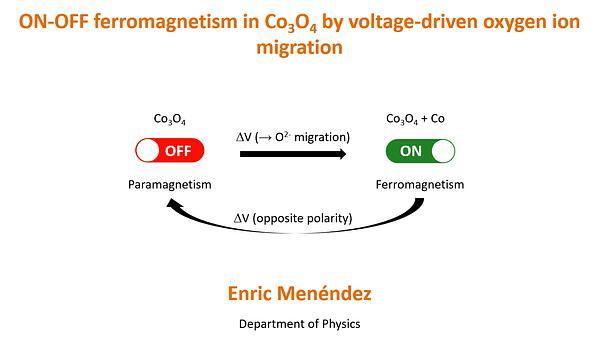Would you like to see your presentation here, made available to a global audience of researchers?
Add your own presentation or have us affordably record your next conference.
We demonstrate field-free spin–orbit torque (SOT) switching in a perpendicular CoFeB/Ta/CoFeB tri-layer device through manipulation of inter-layer exchange coupling. This finding is based on experimental and simulation results. In the Ta thickness range of 0.5~3 nm, the device exhibited a clear Ruderman–Kittel–Kasuya–Yosida (RKKY) oscillation where the anisotropy can be modulated. This resulted in a tilted magnetic moment and thus created a tunable SOT switching window. We found that the SOT switching current density (Jc)also appeared to vary with the Ta thickness (tTa). By cross-tuning the anisotropy and Jc with Ta spacer thickness, field-free SOT can be enabled in this tri-layer system. With microspin simulation we show that, when the out-of-plane spin polarization from the pinned layer generated a torque that broke the symmetry of the free layer, precession could be enabled along the x-y plane. This made it possible to achieve perpendicular magnetization switching without an external magnetic field by overcoming the damping torque. Through simulations we also confirm that the Neel orange peel effect became non-negligible due to interface roughness and coupling effect in the presence of perpendicular anisotropy. Fortunately, the Neel field induced by the Neel orange peel effect was found to favor the zero-field reversal.

Fig.1 (a) Schematic illustration of the Ta/MgO(1)/CoFeB(1.2)/Ta(1.0)/CoFeB(1.2)/MgO(1)/Ta (thickness in nanometer) Hall bar device and corresponding measurement configuration. (b) Hall resistance (RHall) v.s. perpendicular magnetic field (Hz) for the proposed device with varying tTa. (c) Current-induced magnetic switching with varying tTa. (d) Upper figure: macrosimulated Mz v.s. Jc with M1 tilting from +Z to +Y by 20 deg. but M2 lying perfectly along +Z direction; lower figure: simulated Mz v.s. Jc with M1 lying along + Z direction but M2 tilting from + Z to + Y by 20 deg. (e) micro-simulated switching of the proposed device; left: both M1 and M2 with (001) alignment; right: M1 with (001) but M2 with (0, cos5°, sin5°) alignment. Snapshots of the magnetization reversal configurations corresponding to the two switching conditions, which were taken at ~4.9 ns (marked by vertical dashed lines).
